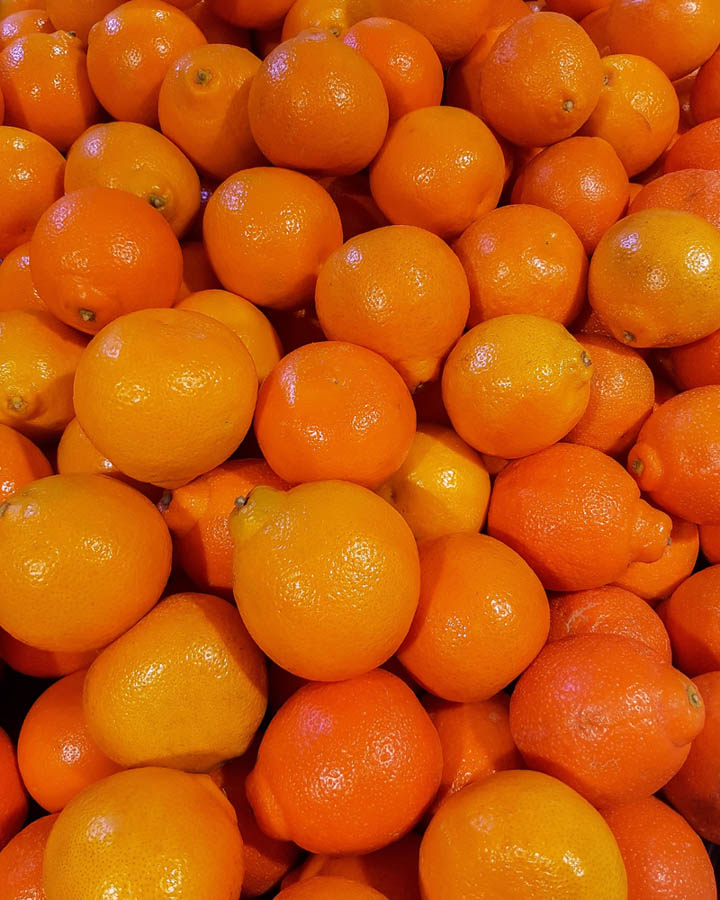A Brief Guide to Mandarins and Their Hybrids

Though Mandarin trees are a much less common sight in California than the common sweet orange tree, they are enjoyed and planted by many for their unique fruit. As a group, mandarin orange trees are one of the most diverse types of citrus. Many types of Mandarins have a loose, easy to peel skin, with segments that separate nicely. The fruits are sometimes described as sweeter than a classic sweet orange. They are suited to growing in a more diverse range of climates than other types of citrus, being both more cold hardy and tolerant of desert heat.
Mandarin trees are small trees in the Citrus genus and the family Rutaceae, the rue family, with many of its numerous plant members known for producing strongly aromatic, flavorful, or medicinal leaves and/or fruit. Tangerines are commonly confused with mandarins. Tangerines are a specific sub-type of mandarin oranges, generally with a more reddish colored skin. Mandarins commonly grown in the home garden and landscape include Satsumas, Encore, Fairchild, and Gold Nugget.
Choosing a combination of varieties with differing harvest windows will allow you to harvest mandarin oranges for a large portion of the year. Mandarin oranges vary widely in their harvest times and characteristics.
To do so, chose an early ripening variety in combination with a late ripening variety. Early ripening varieties include the Satsuma mandarin, and several types of mandarins that are considered tangerines. Satsuma mandarins are especially tolerant to cold temperatures (for a citrus tree). They have extra loose skin, and do not store well on the tree. They will easily over-ripen and rot. There are a number of popular Satsuma sub-varieties, including Owari, Dobashi Beni, and Okitsu Wase. Okitsu Wase and Donbashi Beni types.
Mid-season varieties include the Honey and Kinnow mandarins. These are all hybrid varieties, all known to be very sweet. Kinnow trees are very juicy fruit, but are known for being a bit more difficult to peel than other mandarins. Additionally, they strongly display “alternate bearing”, production of heavy load of fruit every other year.
A recommended late season variety of mandarin is the Pixie. This variety is also known for alternate bearing. The fruit is medium-sized, seedless, with a bumpy skin. Another late season variety is Encore, a hybrid variety with an an especially late ripening season. The tree is more erect that other types, with slender branches.
Tangelos (Citrus tangelo) are a hybrid between mandarins and grapefruits. They are best grown in hot, desert climates. They will become more seedy if grown by other mandarin varieties. There are two main varieties: Minneola is recommended for home gardens, and performs well in areas with enough heat to develop the sugars; Orlando is more similar in appearance to an orange, with an earlier maturation and more adapted to extreme conditions. Orlando requires pollination to have adequate fruiting.
Tangors (Citrus nobilis) are a hybrid between mandarins and sweet oranges. One of the most well known tangor varieties is Murcott, or “Honey Tangerine,” a seedy, but super sweet fruit. With the exception of Murcotts which can be grown in California’s hot inland valleys, Tangors are better adapted to growing in Florida than in California and generally do not make good choices for California home gardens.
Don’t know your GardenZeus climate zone? Click here.
Other articles of interest:
GardenZeus Quick Tips: Harvesting Lemons
Getting Started With Citrus: Purchasing and Placing Your Citrus Trees
Orange Trees: Should They Have Companion Plants?